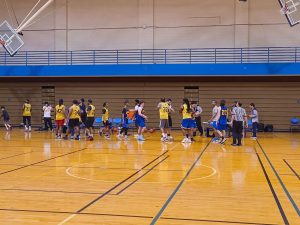Learning of Our Past to Understand Our Present
A Book Review of “Northeastern Illinois University: The First 150 Years”
February 21, 2023
NEIU is currently facing serious hardships and working through a time of worrisome uncertainty, but what has led us to this point? Where did it all begin? To fully understand and appreciate our present, we must look into our past.
The nonfiction book “Northeastern Illinois University: The First 150 Years”, by historian and alumnus Richard C. Lindberg, takes the reader through the long journey of NEIU’s development and history. Lindberg begins by describing the ideologies and innovators that laid the foundations for the American public school system. NEIU’s journey began with the humble beginnings of the Cook County Normal School in 1867, where it was strictly a school for educating and preparing teachers. With detail and care, Lindberg utilizes the first half of the book to paint a picture for the reader that ecompasses the rich history and highlights the bold leaders that dedicate themselves to the importance and development of quality education.
The second half of the book gives a comprehensive recounting of NEIU’s more modern history, starting with the groundbreaking of the campus building in 1960 and the opening in 1961 of Chicago Teacher’s College-North (eventually name-changed to be Northeastern Illinois University). From here, Lindberg explains the political, societal and economic factors that molded and shaped the school immensely over time. The university improved upon itself year after year and went through tireless trial and error in order to provide its students with educational excellency, its faculty with valued support and its community with growing opportunity. Lindberg does an impressive job with taking the reader step-by-step through all of the complex challenges and triumphs of the university, which eventually brought NEIU to become the multi-cultural institution of higher learning that it is today.
Overall, Lindberg has an intelligent writing-style that is also easy to understand. The book is about 275 pages long, and is chock full of information that he meticulously lays out for the reader. Thankfully, the book did not read too much like a tedious history textbook, but rather felt like a flowing telling of NEIU’s story. The book also contains photographs throughout that visually accompany the text in an intriguing and helpful way. For those who have a high interest and admiration for history, this would be an enjoyable read for you. I personally do not tend to enjoy reading nonfiction in my free-time or for fun, so I can not say that I had a particularly thrilling and entertaining time while reading this book.
On the other hand, I certainly value the new information, insights and appreciation I gained from the book. Before reading it, I honestly had very little knowledge of NEIU’s history. Learning more about NEIU’s humble beginnings and all of the notable people and events that brought about continual evolution and improvement of the university really put things into better perspective for me. I finished the book feeling more appreciative for the opportunities and education I have now, which is all thanks to the hard-work and determination of the people from our past.
As for understanding NEIU’s current situation, the book does give a pretty good explanation for how we got here. Since the book was published in 2017, the information ends at that point in the university’s story, but it does give the reader a better understanding of the beginnings of NEIU’s current financial woes.
I’d like to note that the book is also clear in showing that NEIU has faced several hardships, mistakes, controversies, setbacks and times of economic despair in its past. This is not the first time that the university’s future felt uncertain. Due to this fact though, the book actually left me feeling somewhat hopeful. NEIU has survived and persevered through multiple wars, times of extreme political and societal unrest and severe economic depressions. Even at times when hope felt lost, NEIU was able to overcome adversity and continue to grow. Perhaps (and hopefully) history will continue to repeat itself, and our university will be able to once again bounce-back and improve in order to better serve students and faculty for generations to come.
As a final note, if reading about the very early history of the university does not pique your interest, I’d recommend at least reading the second half of the book that focuses on its modern history. Regardless of if you read all of it or part of it, this book will certainly leave you feeling much more well-informed, appreciative and understanding of NEIU’s past and present.








